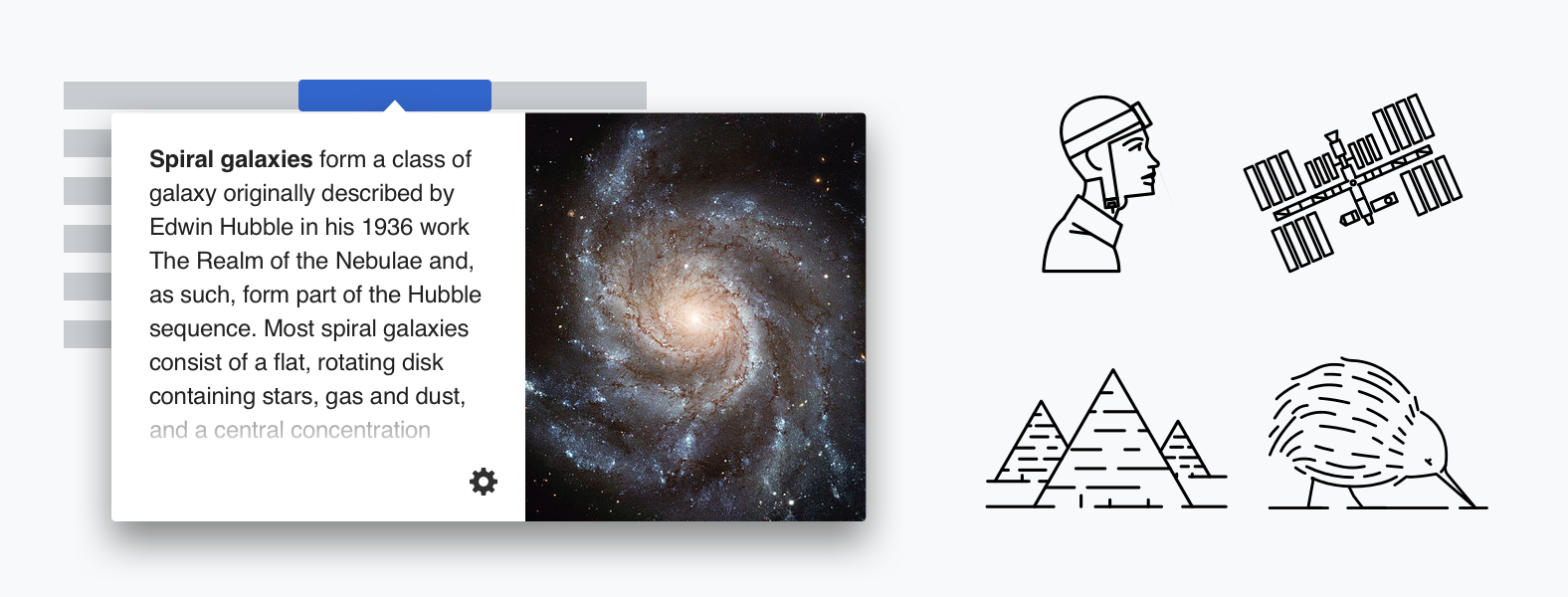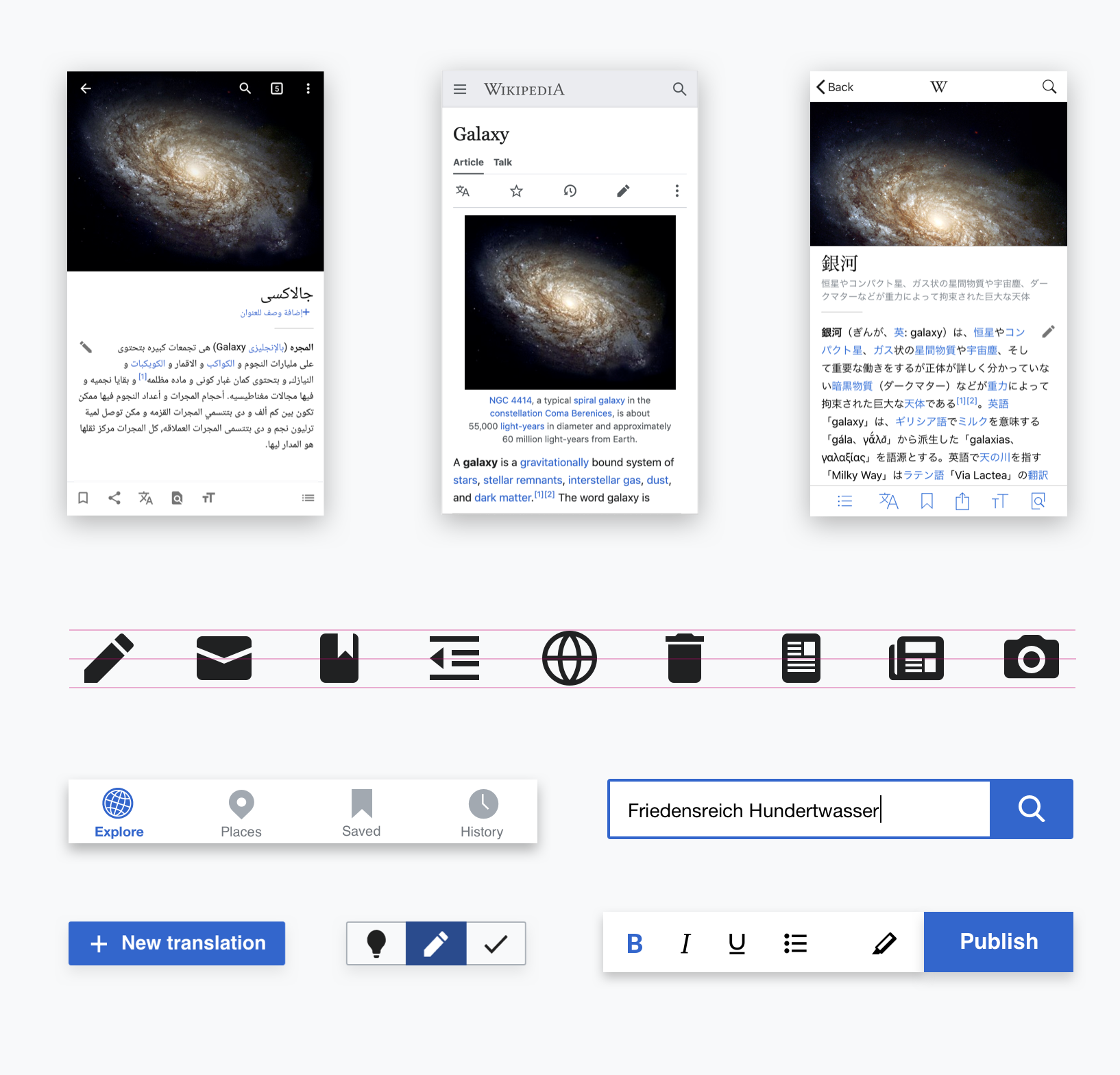Overview
When making design decisions, we need to choose among possible solutions. Design principles help to decide what to prioritize.
Our design principles:
These are described below and aligned to our statement of purpose. Find further details at Design on Wikimedia Meta-Wiki.
This is for everyone
We aim to support a very diverse audience. This is a core part of our mission. We strive to help users overcome any barriers that may exist between them and the knowledge our projects provide. These barriers could include accessibility, languages, device and network capabilities, levels of technical expertise, or many other circumstances. When improving the experience for a given group of people, we need to make sure we are not increasing the barriers for others.
Content first
People come to Wikimedia projects for their content. Our solutions should help to facilitate its creation, consumption, and sharing — without getting in the way. Our content (facts, images, quotes, etc.) is our most representative element and needs to be emphasized in our solutions.

Open to collaboration
Our projects are collaborative. Discussion and sharing are key factors to consider. To support diversity and a global mission, our solutions need to provide room for extension and customization to meet particular needs and foster different perspectives.

Trustworthy yet joyful
Wikimedia projects provide reliable educational knowledge. At the same time, our projects are a source of entertainment and satisfy human curiosity. This requires us to find the right balance: we need to convey trust with our solutions and remain entertaining and fresh.

Design for consistency
It is important to rely on familiar concepts to facilitate understanding. People relate quickly and orient easily when we keep consistency in our design and maintain common patterns – independent while careful of their platforms, languages or form factors.
